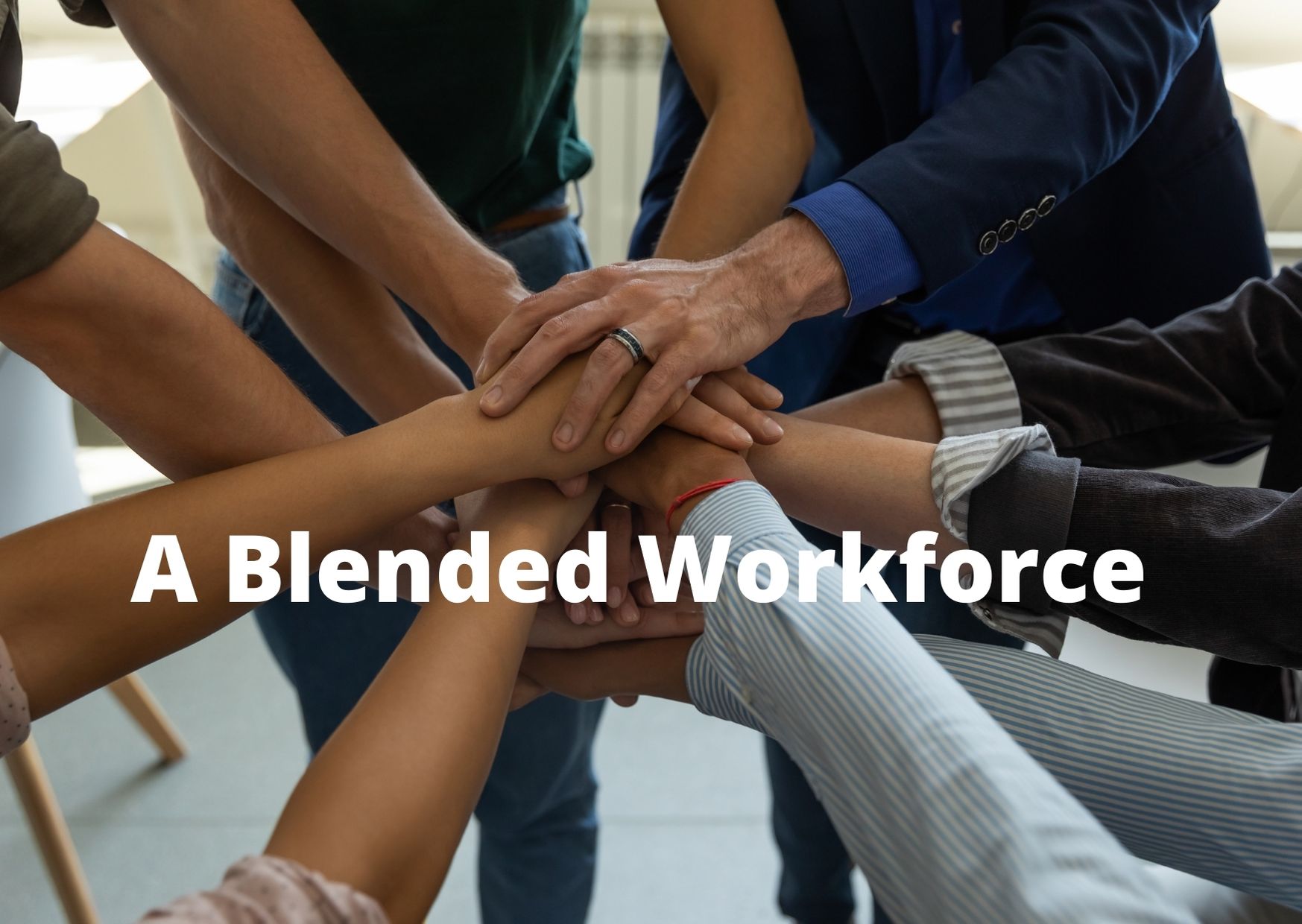
Today’s businesses have a wide range of resources at their disposal, in terms of how they can structure the workforce. The times of permanent employees making up the vast majority of the workforce are gone. Nowadays, organizations prefer more flexibility.
What is a blended workforce?
It is a staffing strategy, that merges the use of both direct-hire personnel and workers in the gig economy. A blended team is able to meet the strategic and tactical needs of your specific organization. This technique means that the company’s workforce would be composed of full-time employees as well as freelancers, contractors, temporary employees, consultants, part-time employees, and other contingent workers, which make up what is known as the “gig economy.” Today, in an average company, about 40% of the gig economy personnel is a mix of freelancers, contractors, part-timers, and temps.

Here are the advantages of having a blended workforce:
Measurable Operations: A blended workforce allows companies to scale their projects or operations up or down as needed. Therefore, it gives organizations the ability to acquire exactly who they need and for exactly how long they will need them for. This helps reduce the costs of physical office space and allows companies to hire employees for the time they are needed.
Provides Flexibility: An organization will experience more flexibility when it comes to staffing, as employees can be engaged in an on-demand manner. Companies can bring in temporary workers during times of increased demand. This allows organizations to always have access to top talent within the industry. It also allows organizations to make use of gig economy staff which gives the business more breathing room in finding the RIGHT candidate for the job. This prevents organizations from making expensive hiring mistakes.
Brings Diversity, Innovation & Fresh Perspective: A fresh take on things can often nicely compliment the stability and knowledge of the brand and customers that traditionally employed workers provide. This type of mix can be better than the sum of its parts, allowing innovation and creativity. A blended workforce often brings more diversity into companies and projects, as each gig economy employee brings a unique perspective as they are removed from traditional office politics.
Closing Skill Gaps: One of the biggest perks of a blended workforce is that it allows organizations to address short-term needs for specialized skillsets. This includes hiring temporary employees when specific projects require skills from external experts. The implementation of a blended workforce means that a company no longer relies on one talent acquisition procedure. The best way to address a skill gap is by having a flexible approach to hiring employees. By adapting the way a company searches for skilled employees, the organization will soon find people that meet their needs.



